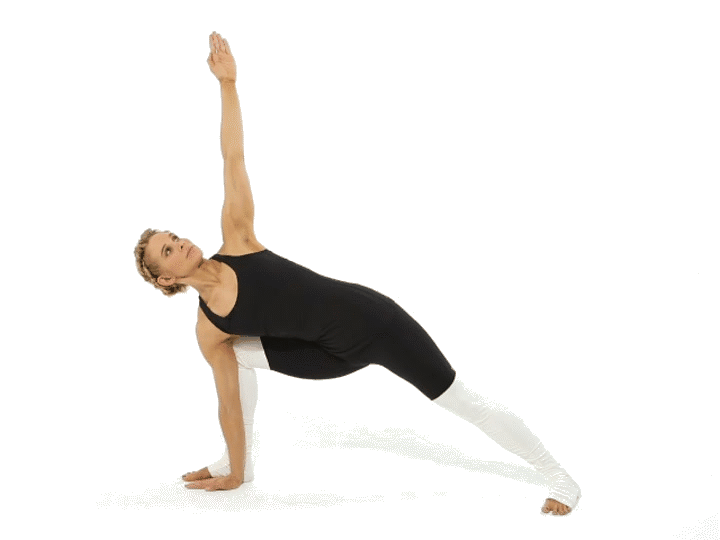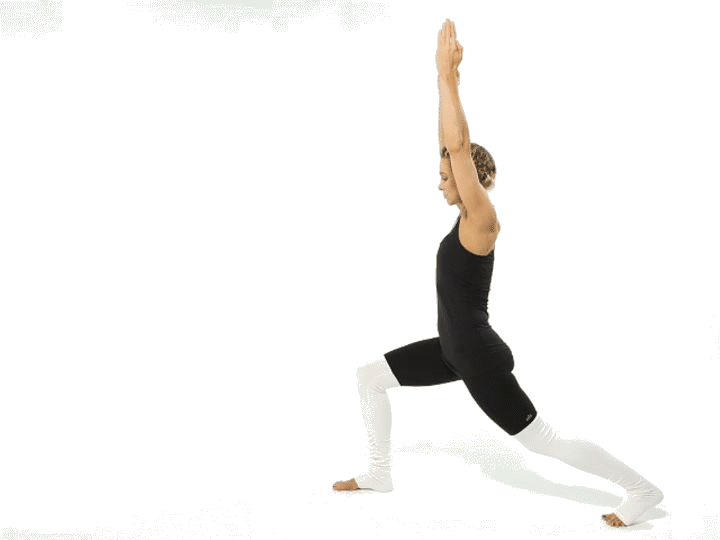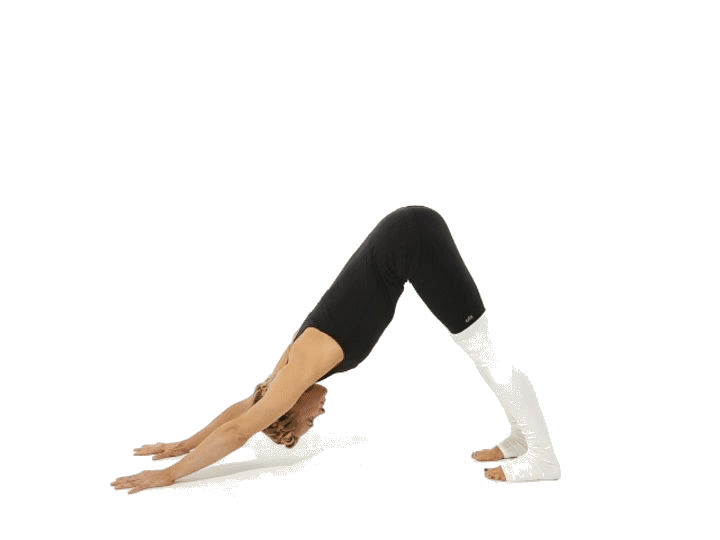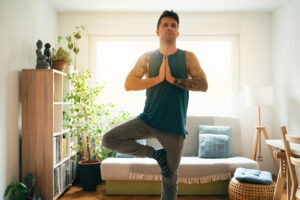Summary
- The text outlines four yoga transitions that promote relaxation and improve flexibility and balance.
- Tips include synchronizing breath and using props to enhance relaxation and prevent compensatory movements.
Here’s an in-depth look at four flowing yoga transitions that help release tension and promote deep muscular relaxation. You’ll learn how to move between poses smoothly, why each transition works, and how to make the most of every stretch—so you finish feeling lengthened, balanced, and calm.
Side Angle to Warrior II

How to Flow:
- Begin in Extended Side Angle (Utthita Parsvakonasana): front knee bent at 90°, back leg straight, front arm resting on your thigh or the floor, and top arm reaching overhead in line with your body.
- Slide your back foot slightly forward, pivot your hips, and turn your torso until you arrive in Warrior II (Virabhadrasana II), with both arms parallel to the ground and gaze over your front hand.
- Breathe deeply as you move, feeling the stretch along your back hip and the side of your torso.
Why It Relaxes Muscles:
- Hip and groin opening: loosens tightness from sitting too long.
- Lateral line release: stretches the connective tissue along your ribcage and lower back.
- Static strength: engages your core and legs, helping stabilize and then relax the surrounding muscles.
Warrior I to Warrior III

How to Flow:
- Start in Warrior I (Virabhadrasana I): front knee bent, back leg strong, and arms lifted overhead with palms together.
- On an exhale, shift your weight into the front foot, hinge your torso forward, and lift the back leg until your body forms a straight line from fingertips to lifted heel—this is Warrior III.
- Keep your hips square and core engaged. Gaze softly down to protect your neck.
Why It Relaxes Muscles:
- Balance and proprioception: activates small stabilizers around ankles and hips, reducing chronic tension.
- Posterior chain stretch: lengthens hamstrings and calves, releasing tightness from running or squatting.
- Core engagement: primes your abdominals and lower back to release fully in subsequent stretches.
Downward Dog to Forward Lunge

How to Flow:
- From Downward Facing Dog (Adho Mukha Svanasana), with hips lifted and spine long, inhale deeply.
- On the exhale, step your right foot between the hands, landing in a high lunge with front knee over ankle and back leg extended, heel lifted.
- Place hands beside your front foot—or lift them overhead if comfortable—and breathe into the stretch.
Why It Relaxes Muscles:
- Hamstring and calf release: the controlled weight shift gently stretches the back of the leg.
- Hip flexor opening: extends the back leg to soften tight quads and hip flexors common after weight training.
- Spinal lengthening: encourages decompression of the vertebrae for lower back relief.
Tree Pose to Warrior III

How to Flow:
- Find Tree Pose (Vrksasana) by standing on one leg, placing the sole of the opposite foot on your inner calf or thigh, and bringing hands to prayer or overhead.
- From here, hinge forward at the hips as you lift the planted foot off the ground and extend it behind you, arriving in Warrior III with arms reaching forward.
- Fix your gaze on a steady point, and breathe evenly to maintain balance.
Why It Relaxes Muscles:
- Neuromuscular balance: challenges proprioception around the ankle and knee, easing habitual tightness.
- Glute and hamstring stretch: the smooth leg lift lengthens these key muscles.
- Core and shoulder engagement: builds gentle strength so your spine can unwind more completely in seated or supine stretches.
Tips to Deepen Relaxation
- Synchronize breath: Inhale on the preparation, exhale as you transition—this calms the nervous system.
- Hold each pose for 30–60 seconds: Give your fascia and connective tissue time to soften.
- Use props as needed: Blocks or straps let you honor your current flexibility and avoid compensations.
- Maintain a continuous flow: Move without jerks or pauses to keep muscles warm and receptive.
Incorporating these four transitions into your yoga routine will not only warm you up safely but also deliver profound muscular relaxation afterward. Master these flows, and you’ll find more ease in your body, sharper focus in your mind, and a smoother path to your next workout or yoga session.








